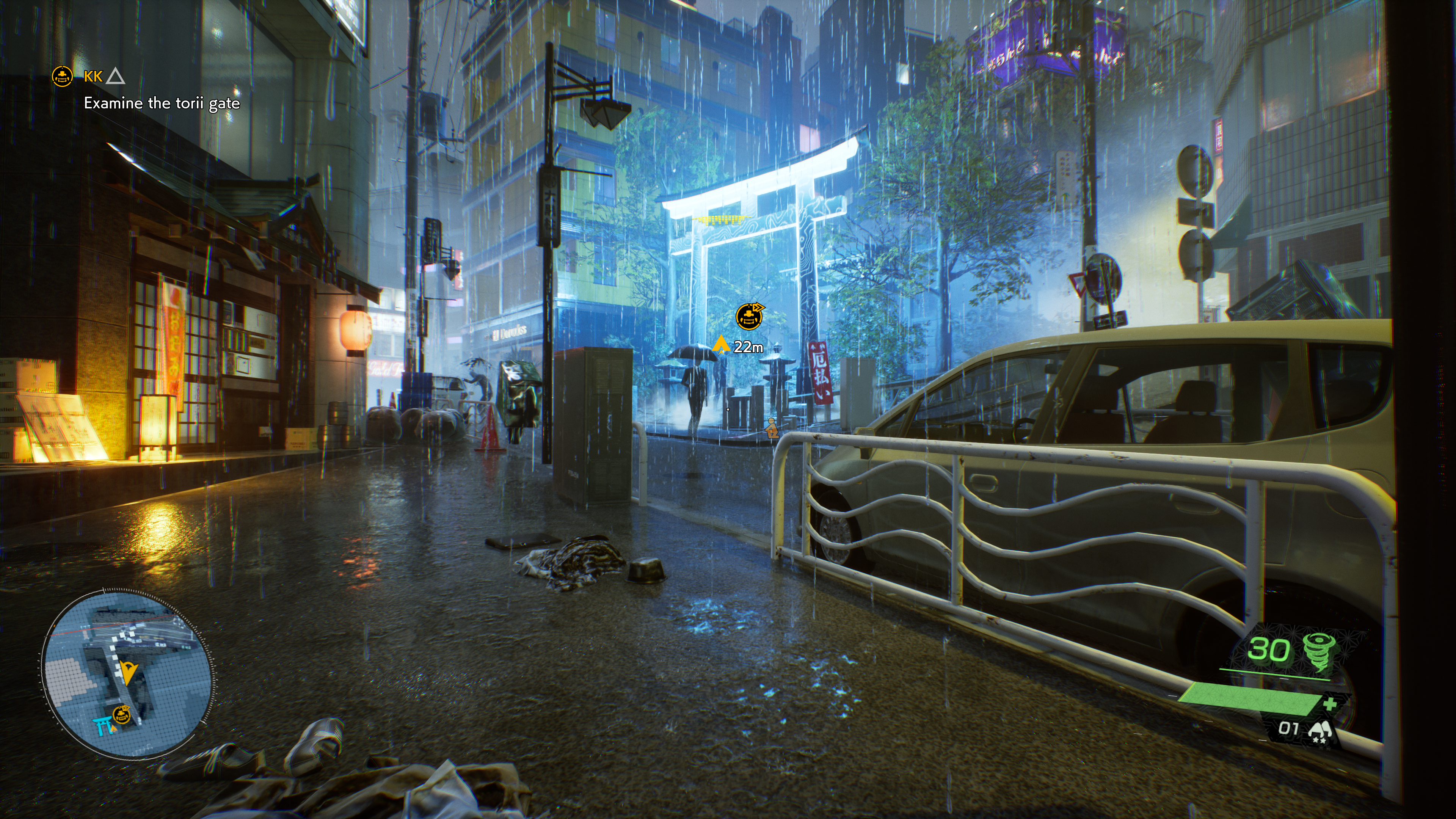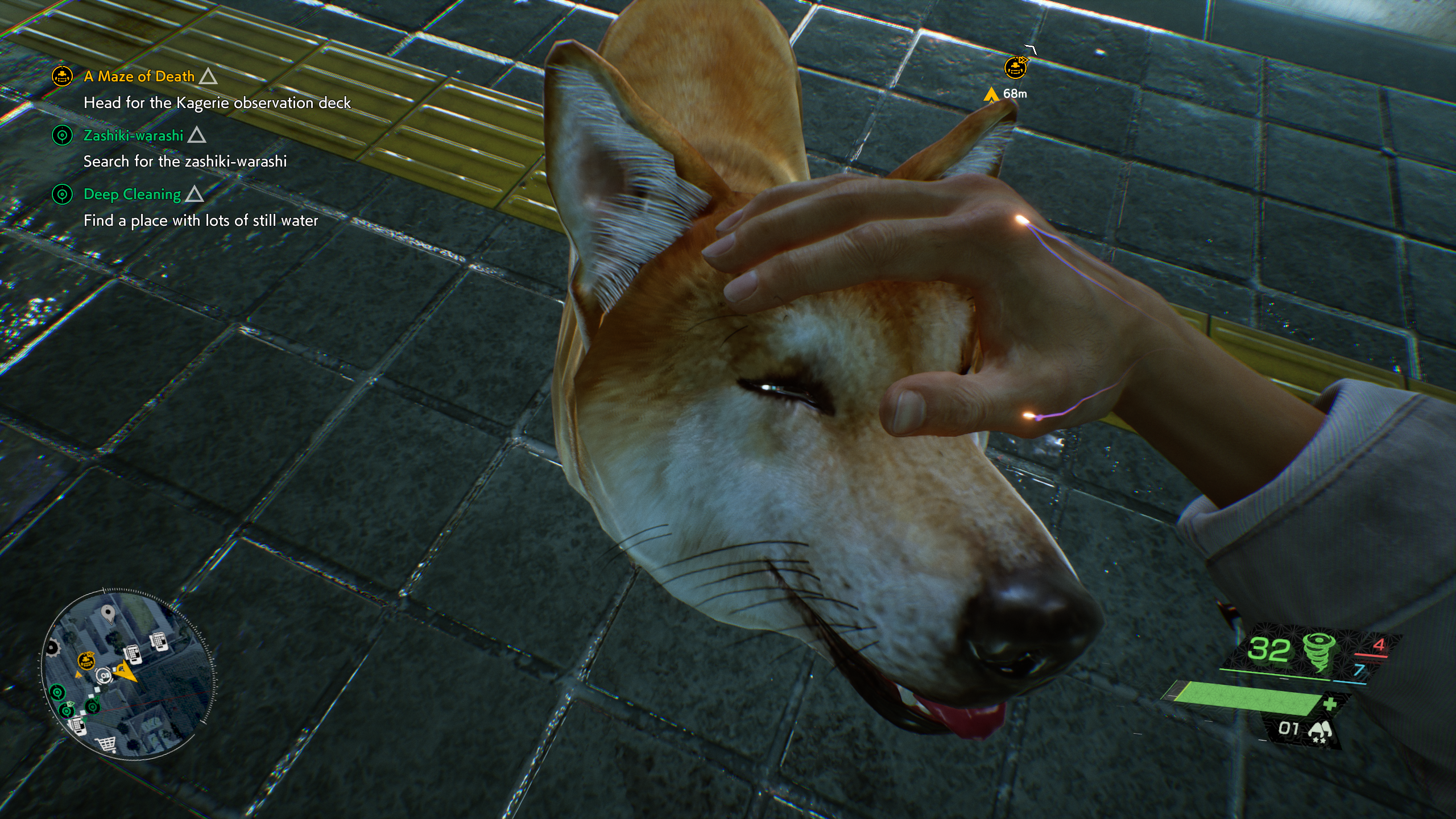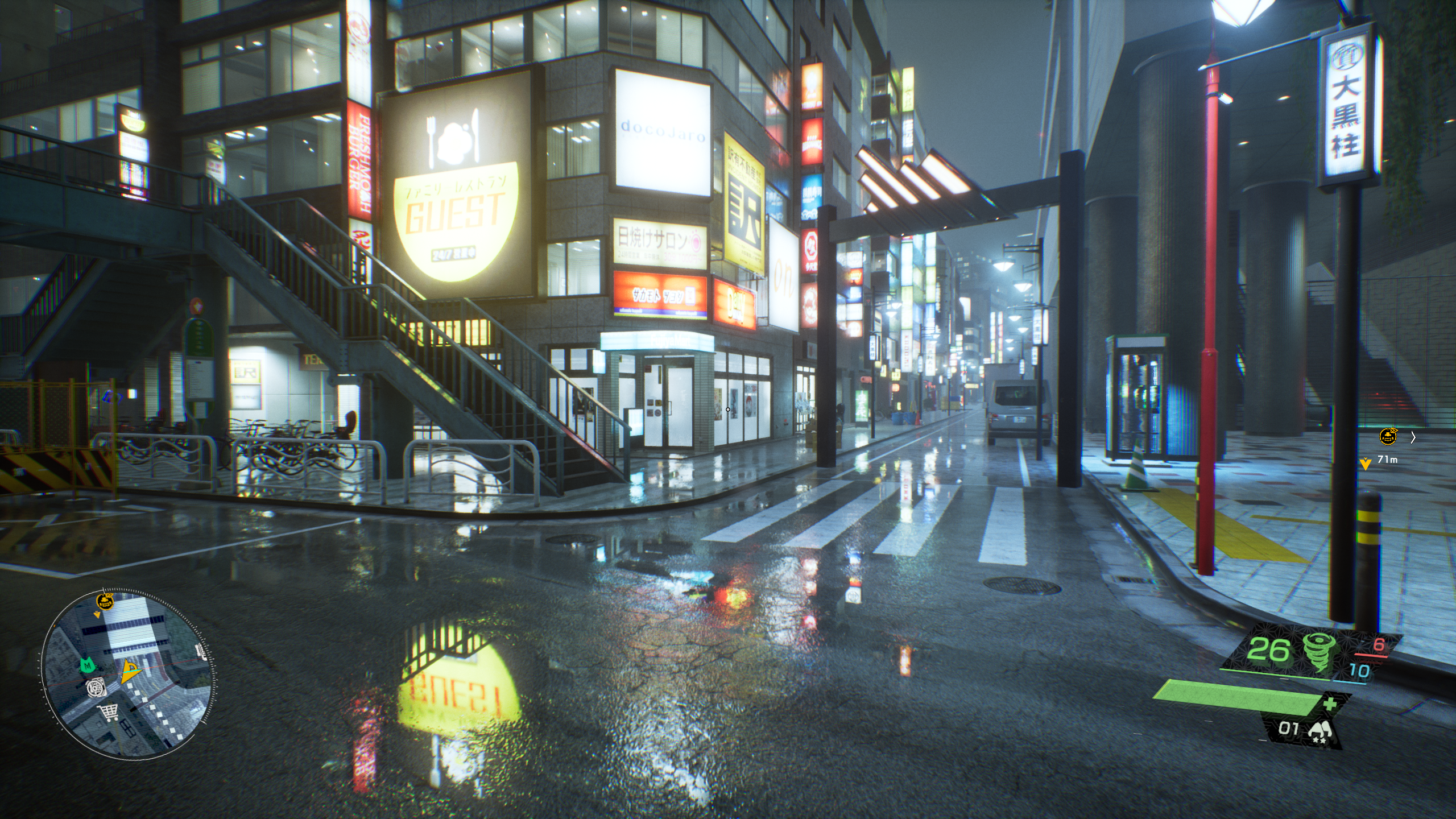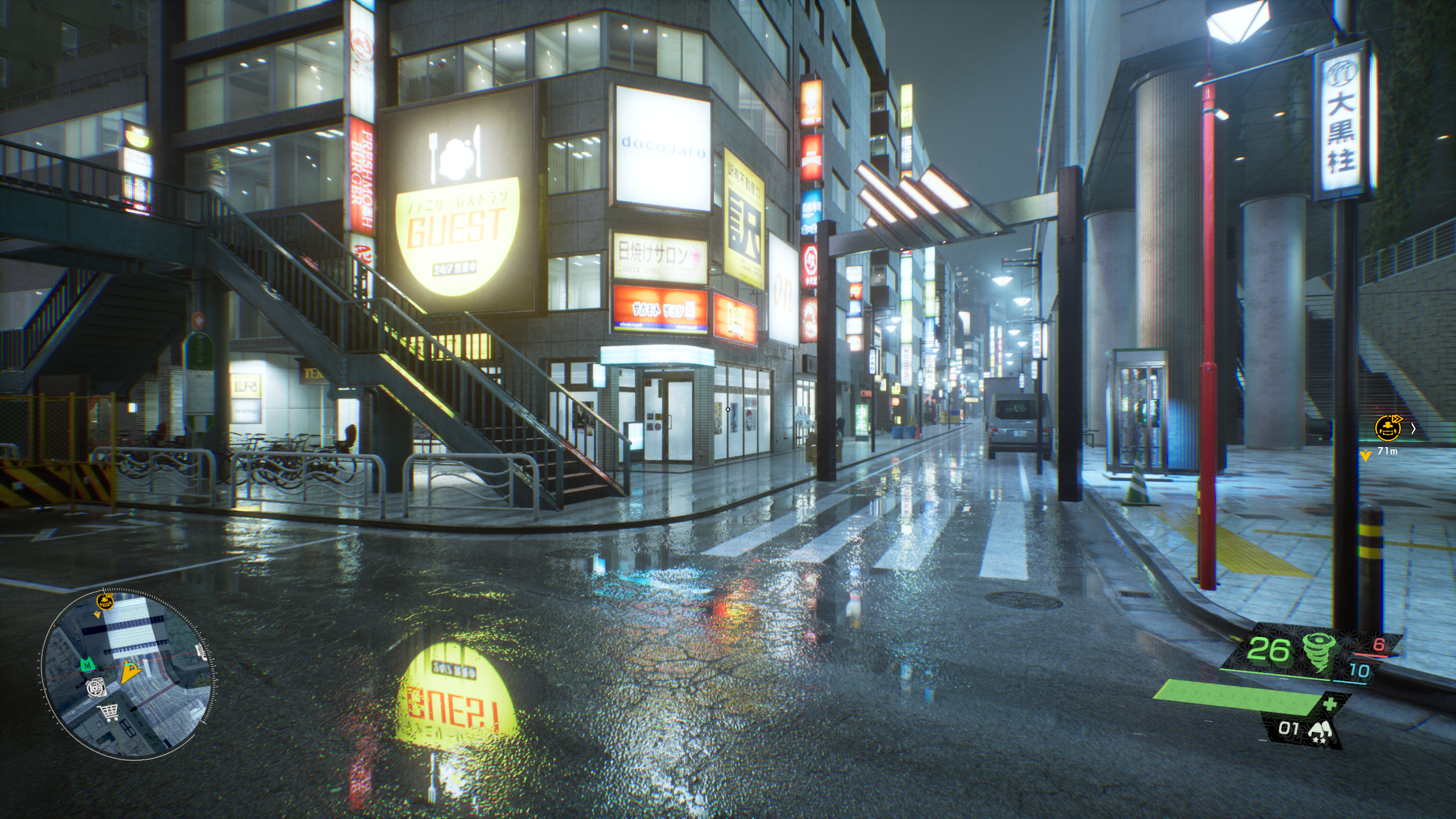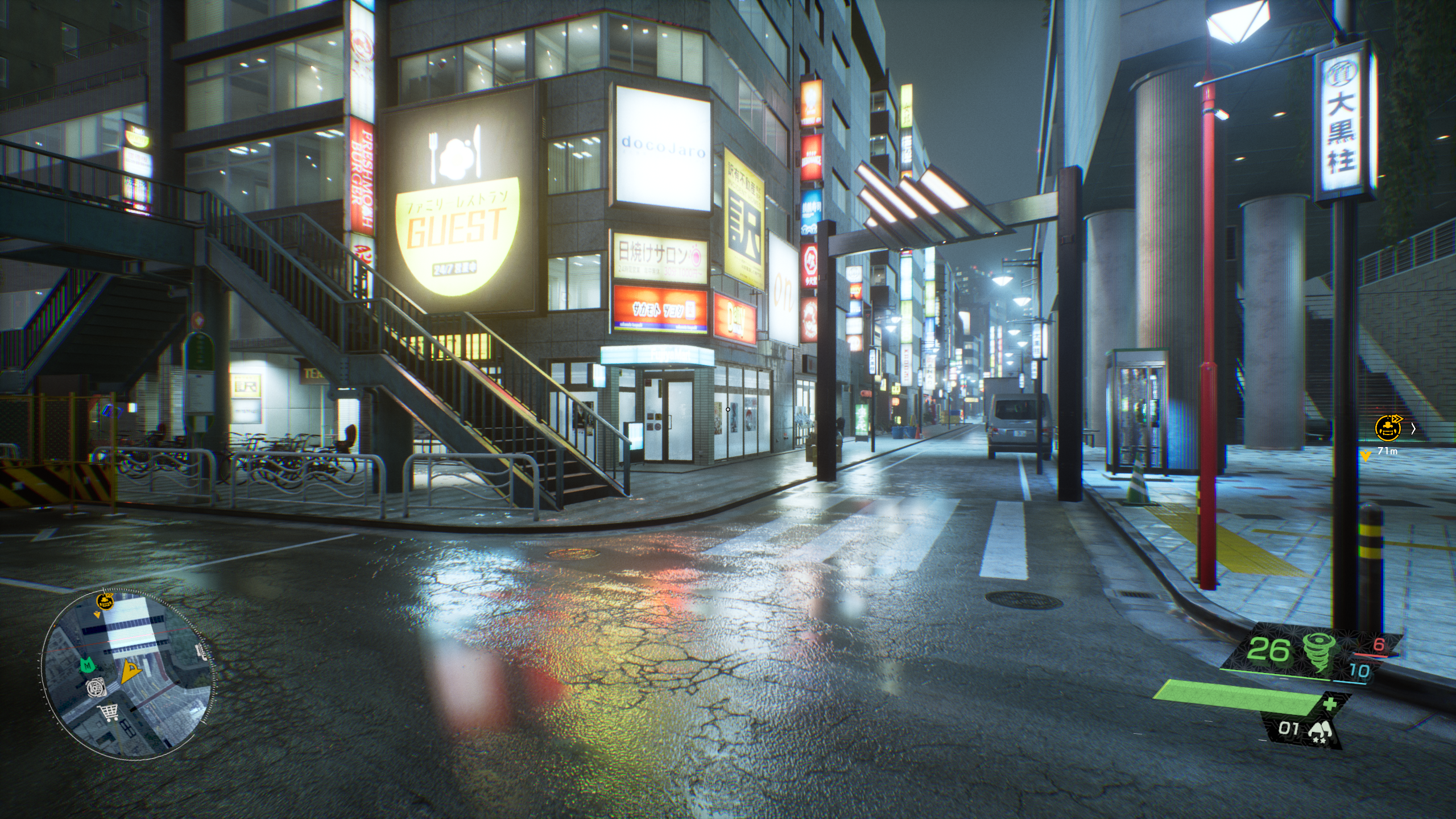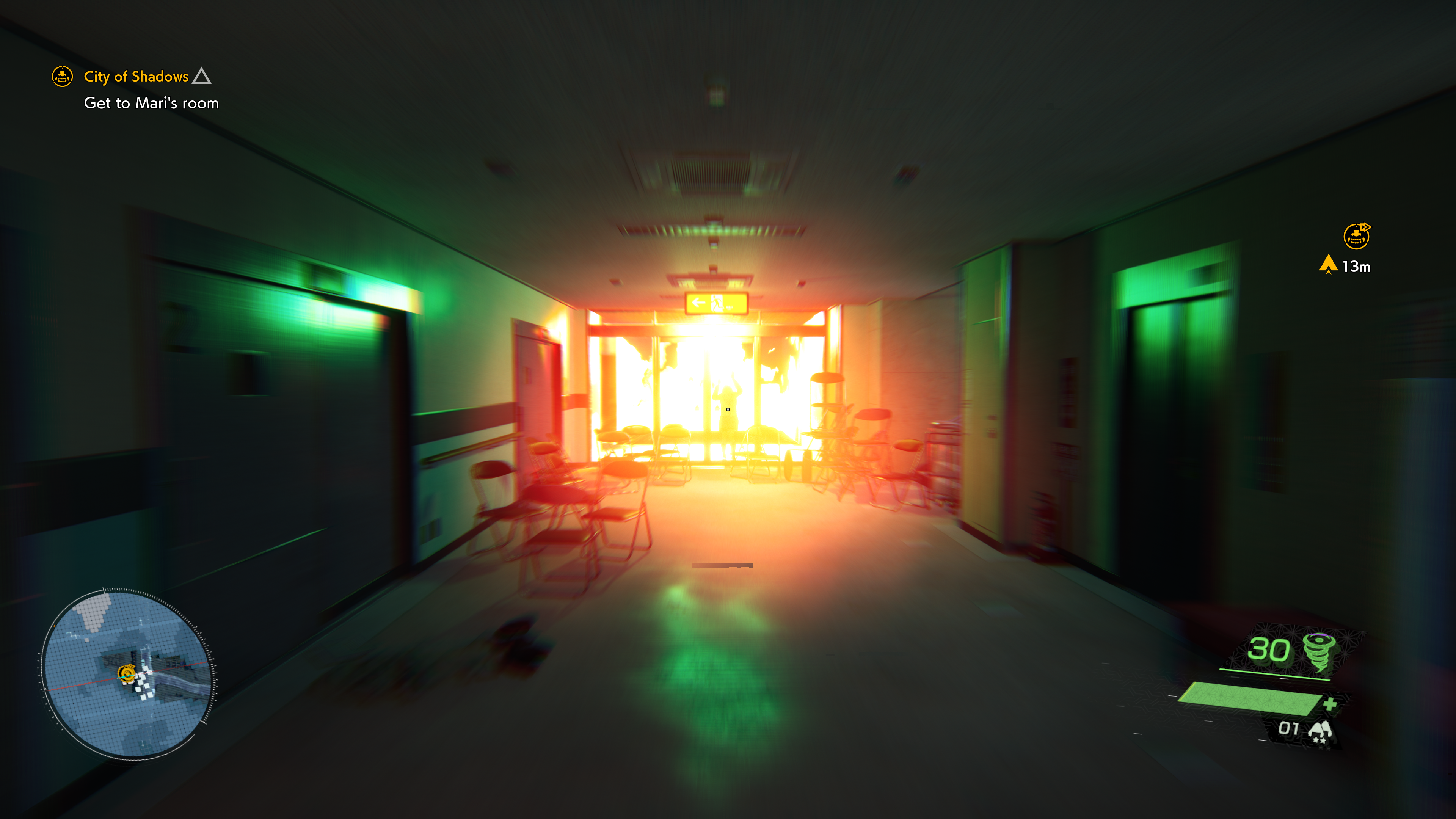Indeed, despite some spooky-looking system requirements, Ghostwire: Tokyo can run well on older or lower-spec builds, just as surely as it gets the most out of the very best graphics cards. Within these paragraphs we’ll take a close inspection of how it handles different hardware and display resolutions, as well as which are the best settings to change for optimal PC performance. Well, I say that – as good as Ghostwire: Tokyo is at providing other PC perks, like an uncapped framerate option and both Nvidia DLSS and AMD FidelityFX Super Resolution (FSR) upscaling, several of its graphics settings don’t seem to affect performance much. Getting the best balance of speed, sharpness and shininess is more about how you deploy a smaller number of high-impact settings, including ray tracing and upscaling.
Ghostwire: Tokyo system requirements and PC performance
Before we get into all that, you can relax about one thing: Ghostwire’s official PC specs are what you might call overly pessimistic. For instance, here are two lowest sets, Minimum and Recommended: the former is apparently specced for 30fps at 720p, the latter for 30fps at 1080p.
Ghostwire: Tokyo Minimum system requirements
OS – Windows 10 (64-bit) CPU – Intel Core i7-4770K / AMD Ryzen 5 1600 GPU – Nvidia GeForce GTX 1060 (6GB) / AMD Radeon RX 5500 XT RAM – 12GB Storage – 20GB (SSD recommended)
Ghostwire: Tokyo Recommended system requirements
OS – Windows 10 (64-bit) CPU – Intel Core i7-6700 / AMD Ryzen 5 2600 GPU – Nvidia GeForce GTX 1080 / AMD Radeon RX 5600 XT RAM – 12GB Storage – 20GB (SSD recommended)
I tested both the GTX 1060 and the GTX 1080 in our main benchmarking rig, which admittedly has 16GB of RAM and a beefier CPU (the Intel Core i5-11600K) than anything in these two spec lists. But at 1080p, the GTX 1060 averaged 51fps with everything set to Low (and that’s Low, not the lowest) while the GTX 1080 pumped out 106fps with everything except ray tracing maxed out. I don’t actually have magic powers granted by the ghost of a surly Japanese cop, but if I did, I’d bet them that these “minimum” specs will get you an awful lot more than 30fps. Higher resolutions don’t demand the latest and greatest components either, at least without ray tracing. At 1440p, the GTX 1080 could still average a smooth 70fps with maximum settings – that, or roughly equivalent cards like the RTX 2060 or Radeon RX 5700, should stay above 60fps even with less powerful CPUs backing them up. And that’s not even taking upscaling into account; Nvidia’s older and non-RTX GPUs won’t support DLSS, but there are other options. Besides FSR, Ghostwire: Tokyo also another simple upscaler, Unreal Engine’s Temporal Super Resolution (TSR), which looks a little better than FSR though doesn’t boost performance as much. I’ve included it in the test results below. Speaking of upscaling, it’s almost a necessity when ray tracing is in play. These reflection and shadow effects look tremendous, though in fairness to the downbeat system specs, running them smoothly does require some premium hardware. At 1440p and without upscaling, my RTX 3070 was averaging 48fps when all the possible RT effects were enabled – that’s down from 120fps when they were switched off, all other settings being equal. Fortunately, Nvidia GPUs that can enable ray tracing can also access DLSS, which can take the RTX 3070 back over that important 60fps threshold. For the ultimate, 4K/60fps/maximum ray tracing experience, I did have to break out the RTX 3090, and even then it only stayed above 60fps with DLSS on its Balanced setting. But that still looks as good as native 4K, and DLSS kept the RTX 3070 in a playable 30fps-plus state with the same resolution and settings. Any semi-recent, higher-end card should suffice for 4K if you can live without ray tracing, too. As for hiccups, it’s no Elden Ring but I did get the very occasional stutter in Ghostwire: Tokyo. Enemy spawns and some of the flashier attacks can both be triggers, and sometimes the FPS would drop at random while moving around the open world. I do hope these get smoothed out with updates, though they also didn’t occur often enough to seriously annoy.
Ghostwire: Tokyo best settings guide
There are no easy presets in Ghostwire: Tokyo’s graphics settings, so the piecemeal approach is the only approach. The eight main quality settings are joined by three upscaling options and three different types of ray tracing effects, which as ever will only be usable with a GeForce RTX graphics card or one of AMD’s more recent Radeon cards. Despite the major FPS drain, if you’ve got the hardware then these ray tracing effects are worth flicking on. The lights, signs and billboards bouncing off Tokyo’s soaked streets are central to the game’s overall aesthetic, and while the standard screen space reflections also look really nice, they can be prone to inaccuracies. And it’s not just the roads – ray traced reflections and shadows spruce up level geometry and interiors as well. Your choice of upscaler will reclaim some of the lost performance, too. Still, ray tracing won’t be available to everyone on PC, so I’ve split this guide in two. The first half focuses on the standard settings, with the second dedicated to ray tracing configuration. My control test for both was the RTX 3070, running maxed-out settings at native 1440p; this produced an average of 120fps in my repeatable benchmark. Motion Blur Quality: This has several levels to pick from, up to the swooshiest “Cinematic” setting, but my advice is to turn this off entirely. Doing do gave me an extra 5fps, or a 4% boost to performance. SSS Quality: Subsurface scattering effects, to use the full term. This determines how realistically translucent textures are lit, like paper or skin. Turning SSS effects off entirely bumped up performance by 6%, which isn’t to be sniffed at, though the difference between Cinematic and Low was less than 1%. In other words, turn it off if you’re struggling, but if you do want SSS then you may as well leave it on full. SSR Quality: This covers all those mirror-like screen space reflections. Surprisingly, dropping from Cinematic to Low didn’t improve performance by a single frame; it took turning them off entirely to get even a 4% boost. This might be worth doing on lower-end hardware, though it’s kind of the nuclear option when good reflections are to integral to the game’s look. Global Illumination: Here you’ve a choice of SSAO (screen space ambient occlusion) and SSGI (screen space global illumination), the latter being the Unreal Engine’s built-in dynamic indirect lighting system. Despite SSGI being positioned between ‘Off’ and SSAO in the settings list, suggesting it’s the middle ground, it’s actually a lot harder on your rig than SSAO; 120fps with SSAO became 98fps with SSGI. The Unreal version does produce better shadows around large objects, but SSAO can look more detailed. There’s extra shadowing in corners and crevices, and rounded objects look more convincingly lit, with a stronger contrast between bright and dark edges relative to light sources. By comparison, there’s little about SSGI that justifies tanking such a massive performance hit for it. Shadow Map Quality: Shadow resolution, basically, with a higher setting producing less jagged-edged shadows. You may as well leave it on High too, as dropping to Low only gave me an extra 2% performance. Level Streaming Distance: A higher level in this will allow more distant areas of the map to load in at once. Dropping down a level can produce minor performance gains – I got an extra 4% by changing from level 2 to level 1 – and doing so doesn’t visibly hurt visuals at ground level, so this could be one to lower. Unusually, though perhaps wisely, higher levels are only selectable on GPUs with a lot of VRAM: the 6GB GTX 1060 could only enable level 1, the 8GB RTX 3070 maxed out at level 2, and the 24GB RTX 3090 could go up to level 4. Texture Streaming Quality: At last, a texture resolution setting. Not that it has much effect, mind – ditching Cinematic for Low only bumped up performance by 2% on the RTX 3070, possibly because the visible difference in streamed textures is minimal. Safe to leave this up, I’d say. DLSS: The first of the three upscalers, and the best, though as usual it’s limited to GeForce RTX cards. Both its Quality and Balanced settings look close enough to native resolution, and pushed performance up to 140fps and 143fps respectively. Balanced produces much greater gains with ray tracing on (see below), but if you’re going without these effects, you can stick with the highest Quality setting. FSR: The highest setting for AMD’s upscaler, Ultra Quality, can’t match DLSS’s Quality for either sharpness or performance (though it came close on the latter, averaging 139fps). TSR: As a simple upscaler without DLSS’ AI smarts, TSR is closer to FSR than Nvidia’s gold standard. Even so, its highest Ultra Quality setting looks a bit better than Ultra Quality FSR: fine details are a tiny bit sharper, and there’s less of an overly processed, filtered look. The drawback is a smaller performance boost, reaching 129fps, though a 10fps difference isn’t as visible at this range than it would be below 60fps or even 100fps. If you don’t have access to DLSS, try TSR first before resorting to FSR.
Ghostwire Tokyo: ray tracing settings
Running absolutely everything – ray tracing effects and all – maxed-out on the RTX 3070/1440p setup produced a 48fps average. Now it’s time to look at the three individual RT settings to see which can bump that up a bit, as well as which upscalers are most effective with the added burden. Ray-Traced Shadow Quality: Changing this isn’t as impactful as you might expect, given shadows are basically everywhere. Dropping from High to Low increased the average frame rate to 50fps, a meagre 2% rise. Ray-Traced Reflection Quality: This is more like it, with the Low setting granting a big boost up to 66fps. That’s a juicy 15% improvement, and the actual quality drop-off from High is very minor. Ray-Traced Culling Quality: One of the reasons why ray tracing requires eats performance is that for it to work, certain nearby objects need to be drawn even if they’re not in view of the camera. “Culling” (dynamically removing) some of these objects can thus improve performance at the cost of lower-quality, less accurate ray tracing. This particular setting covers the distance at which objects are culled, with the lower the setting, the shorter range at which objects can be removed. I think this is worth keeping on High, though – dropping it to Low only gave me an extra 2% to FPS. DLSS: On the RTX 3070, DLSS’s Quality setting opened up a big lead on FSR and TSR’s equivalents with an 77fps average. The Balanced setting, however, went all the way to 90fps – nearly doubling the frame rate without upscaling. Balanced still looks more or less like native res here, so go for it over Quality when ray tracing is enabled. FSR: Again, FSR’s Ultra Quality setting loses out with a 66fps average, and its lower, faster settings don’t look quite enough like native resolution for my liking. TSR: With a 62fps result, TSR is once more the slowest of the three, though again I’d choose it over FSR for its sharper edges and finer detailing on Ultra Quality. To conclude! Whether or not you’re using ray tracing, a lot of Ghostwire: Tokyo’s standard graphics setting don’t offer serious gains when lowering them. And since it runs fine on older graphics cards, there are a few – especially Shadow Map Quality and Texture Streaming Quality – that you can leave cranked up. For a more optimised configuration, though, consider these settings:
Motion Blur Quality: Off Global Illumination: SSAO Level Streaming Distance: 1 Upscaling: DLSS (Quality) if possible, otherwise TSR (Ultra Quality)
If you’re still struggling, try setting both SSS Quality and SSR Quality to Off as well. Just be prepared for a much more marked drop in visual fidelity. As for those with ray tracing hardware:
Ray-Traced Shadow Quality: High Ray-Traced Reflection Quality: Low Ray-Traced Culling Quality: High Upscaling: DLSS (Balanced) if possible, otherwise TSR (Ultra Quality)
